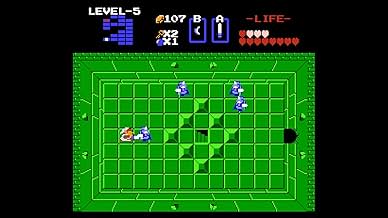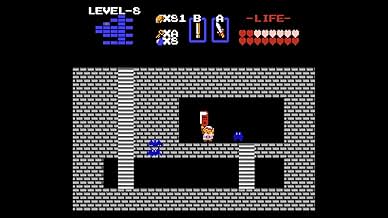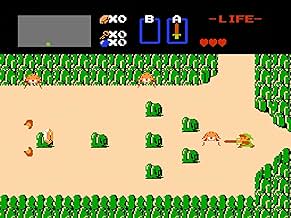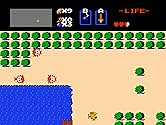Füge eine Handlung in deiner Sprache hinzuFollows the story of a young boy named Link that must save a kidnapped princess from the evil, demonic Ganon, who put a spell on his lair which can only be removed with the 3 pieces of the T... Alles lesenFollows the story of a young boy named Link that must save a kidnapped princess from the evil, demonic Ganon, who put a spell on his lair which can only be removed with the 3 pieces of the Triforce, a golden triangle with mystical powers.Follows the story of a young boy named Link that must save a kidnapped princess from the evil, demonic Ganon, who put a spell on his lair which can only be removed with the 3 pieces of the Triforce, a golden triangle with mystical powers.
Empfohlene Bewertungen
The Legend of Zelda's underworld was a tangled mess of deadly traps - a maze of twisty passages, none alike. Rooms were connected to the north, south, east, and west by open doors, locked doors, switch doors, one-way doors, and even bombed-out passageways. Old men (and hungry Goriyas) lived in these dungeons and dispensed poorly translated advice to would-be adventurers.
Link could wield a wooden, white, or magical sword and wear a blue or red ring to increase his defensive strength. A regular shield repelled most projectiles, but a magical shield defended against fireballs and magic. Heart containers (either found or won) increased Link's life force. The boomerang retrieved items from afar, while bombs damaged foes and opened blocked passageways. Candles burned bushes and lit up darkened rooms. Wooden and silver arrows could be shot for the cost of a rupee apiece. You could cross rivers with a ladder; cross lakes with a raft. The power bracelet let you push heavy things. A magic wand and book let Link send Wizzrobes packing with a taste of their own medicine.
Wusstest du schon
- WissenswertesFirst console game that allowed the player to save their progress.
- PatzerIn one of the dungeons, you will receive a hint that the enemy Pols Voice dislikes noise - yet blowing the whistle does nothing to hurt the enemy. The Famicom (the original Japanese version of the NES) had a microphone, and the player could make noise in it to kill these enemies. As the American NES aborted this feature, this was not possible. Nintendo went ahead and translated this hint verbatim, but because of the lack of a microphone in the American NES, it no longer made any sense and was often misinterpreted.
- Zitate
Old Man: It's dangerous to go alone! Take this.
- Crazy CreditsDuring the end credits, the entire crew except for executive producer Hiroshi Yamauchi is listed under pseudonyms. E.g. producer/director Shigeru Miyamoto is credited as "S. Miyahon", and composer Koji Kondo as "Konchan". See also Trivia.
- Alternative VersionenThe instruction manual for the game states that the Pols Voice, a yellow pointy-eared enemy, "hates loud noise". Although this fact was made irrelevant by the game's release on the North American NES, it was a useful tip in the game's original version for the Famicom Disk System in Japan. On the Famicom, a small microphone was built into the "player 2" controller, and blowing or shouting into this microphone would kill any Pols Voices in the area.
- VerbindungenFeatured in The Legend of Zelda NES Commercial (1986)
Top-Auswahl
Details
- Erscheinungsdatum
- Herkunftsland
- Offizieller Standort
- Sprachen
- Auch bekannt als
- The Legend of Zelda
- Produktionsfirmen
- Weitere beteiligte Unternehmen bei IMDbPro anzeigen


















